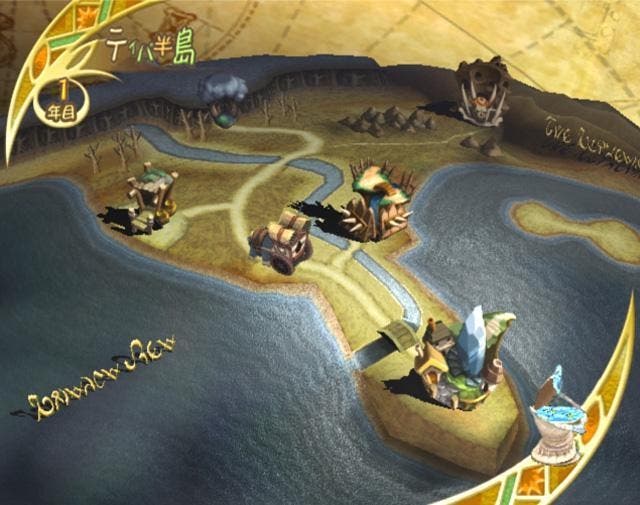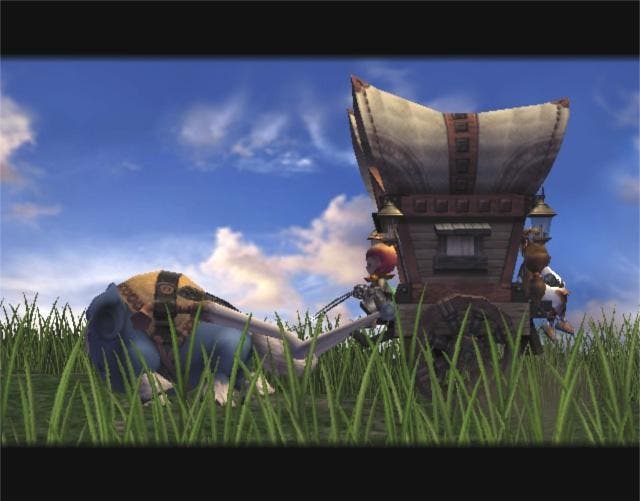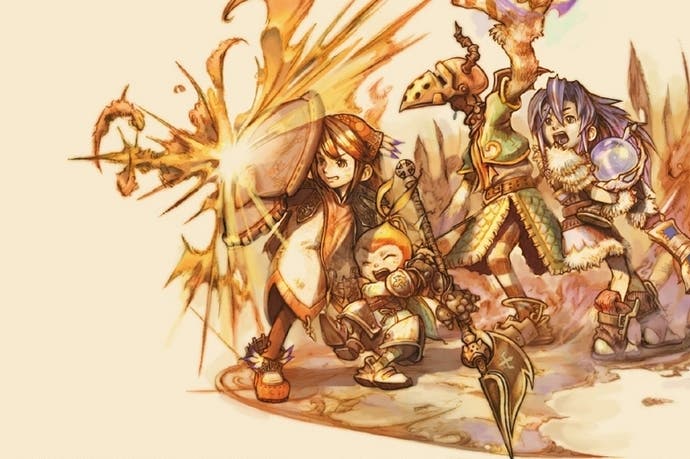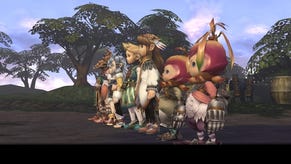Final Fantasy: Crystal Chronicles retrospective
Stuck behind a caravan again.
Final Fantasy: Crystal Chronicles is a case study in overcoming adversity. Born from the chaos of Square Enix's merger and Nintendo's brief obsession with inter-console connectivity, this multiplayer-focused title launched to critical acclaim in 2004, at the height of the Gamecube's popularity. Not since the days of the SNES had Nintendo fans had a notable JRPG to call their own, an absence which Crystal Chronicles was perfectly poised to capitalise on.
Announced in the wake of Final Fantasy 10, it rapidly became apparent that developer The Game Designers Studio - one of Square's internal teams, rebranded in an act of corporate sleight-of-hand to circumvent the ongoing exclusivity deal with Sony - intended this to be a very different game to the Final Fantasies which had come before. Rather than a story-led adventure full of hyperbolic pre-rendered cutscenes, Crystal Chronicles offers a series of communal expeditions best experienced with friends, while Kumi Tanioka's haunting soundtrack of lutes and crumhorns is a world away from Nobuo Uematsu's soaring orchestration.

Yet perhaps the greatest deviation from expectation is the beautiful, hostile desolation waiting to be explored. Crystal Chronicles' world lies beneath a dense cloak of choking, toxic fog, an omnipresent threat which has reduced once-great civilisations to scattered hamlets clustered within the cleansing glow of gleaming crystal fragments. The crystals' power wanes with the passing of the seasons, the continuation of daily life reliant on the sap of an exceedingly rare tree retrieved by caravans of adventurers huddled beneath their own tiny crystal shard.
Rather than trying to reconcile the inherently cyclical nature of multiplayer games with an insistent linear plot, Crystal Chronicles embraces the cycle of survival, exploration and repetition as you fight to keep your village alive, straying further from home with each passing year as the myrrh trees recover from your overzealous harvesting. Each new land you explore brings its own mysteries, each miasma-enshrouded valley and towering fortress introduced in wistful tones by an omniscient narrator telling of the golden age when the sun shone down on these fields, when this ruined city flowed with barter and conversation, when the roads were protected by honourable knights rather than trod by the insane and forgetful.
And when you return home at the end of the year to your loving family's waiting arms, your crystal chalice brimming over with hard-won myrrh, the chief of your little village tells you stories of a young man who went out into the world in search of a way to forever banish the mists. They are tales of desperation, the last legends of a dying people needing something to believe in beyond their crops and their caravan. Perhaps you'll discover the truth before your journey's end. Provided you make it that far.

As fascinating as Crystal Chronicles can be, it's not the easiest of games to actually play. To escape the endless delays of taking turns shopping, or cluttering up the wide vistas of villages and dungeons with four sets of menus, The Game Designers Studio built Crystal Chronicles on the most fully-featured implementation of Gamecube-Game Boy Advance connectivity ever created. With the exception of the lifeless, forgettable single-player mode - the appeal of spray-painting a pet moogle in no way making up for the absence of your fellow travellers - Crystal Chronicles requires each player to connect a GBA to act as personal screen, inventory, menu system and controller all in one.
It's a fascinating, demanding requirement which adds immeasurably to the experience, yet it's also Crystal Chronicles' most notorious stumbling block. A gargantuan logistical effort is required to get four players in the same room with enough Game Boy Advances, link cables, batteries and basic human sustenance to see the end of the lengthy campaign, a high barrier to entry which many people never overcame. They'd play a few hours with their friends in the course of an afternoon, promise to do it again some time, then let their link cables gather dust as time slipped away and they forgot the fun they'd had, only ever recalling the effort required to prepare for an expedition deep into the mists.
But if you continue that journey, if you stick to the path and fight shoulder-to-shoulder with your friends, Crystal Chronicles offers a peerless, engrossing multiplayer experience. A single character's abilities are restrictively limited, but well-coordinated parties combine spells and attacks into devastating screen-filling combos, while the miasma itself - a wonderfully atmospheric bit of scene-dressing - doubles as a natural mechanic to keep the party together and moving in the same direction. Leaving the bubble projected by the chalice results in a rapid demise, leaving you at the mercy of your travelling companions and their dwindling stock of phoenix downs.

Immediate resurrection would seem like a no-brainer, if not for the addition of subtle competitive elements into the mix. Each player's GBA displays a different map - displaying the location of treasure chests, perhaps, or monsters - and a secret objective handed out randomly at the beginning of each dungeon. Whoever carries out their task most successfully gets first pick of the stat-increasing loot distributed beneath the branches of the myrrh tree. Is your brother always rushing ahead to kill all the monsters to achieve his goal, resulting in a frantic dash to deprive him of his prize each time an enemy appears? Or are you the poor sod forced to lug the chalice around, deciding which way to progress along the forking paths but always being last to the fight, denied every reward along the way? Do you complain loudly about the injustice, smugly imagining your friends' faces when you reveal your objective was not to attack, and that the finest of the treasures they rushed to collect now hangs around your neck?
It's this balance of co-op and competition which ties Crystal Chronicles together, infusing it with threads of community. Despite your differences and petty rivalries, each year you return home together and the whole village comes out in celebration, dancing the night away to the sound of flute and drum. In the morning you set out once again to overcome the obstacles in your path with your friends by your side, forging fresh memories of your time together in fire and blood even as the miasma threatens to steal them away.
It has been ten years since Crystal Chronicles arrived on these shores, and each subsequent game in the series has moved into successively safer territory, narrowing the scope, depriving the environment of menace and stripping back the sense of community which made the original's stark choices so memorable. Unfortunately, an unintended side-effect of the enforced GBA connectivity is that Crystal Chronicles is practically impossible to emulate. There's little chance of it ever turning up on Nintendo's Virtual Console, and with each passing year it becomes more and more difficult to gather the hardware required to play. In another decade, perhaps it will be impossible beyond the preserve of museums and collectors.
Yet with smartphones and tablets, the Wii U and the Playstation Vita, far more of us have access to second screens than we did in 2004, and streaming technology has advanced in ways we couldn't have begun to imagine. Perhaps it's time for a new Crystal Chronicles to take its place at the heart of a resurgence of local co-op, and once more lead us to create new memories together with our friends.









